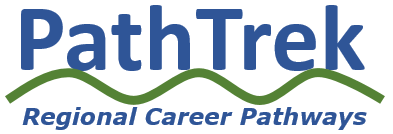GOALS
Overarching goals for the workforce development system and career pathways implementation include the following:
Timely annual distribution of data sets, via a centralized website, to inform workforce development system progress monitoring, annual and long term goal setting and needed course correction
progress monitoring, annual and long term goal setting and needed course correction
Scheduling of public data discussions, before legislative bodies, that inform quantitative goal setting around enrollment and completion targets for secondary and postsecondary career, technical and professional education.
Publication of event and activity calendar to support communication, collaboration, workforce development goal attainment and the implementation of career pathways
Economic Development
The goal of regional career pathways is to improve economic development outcomes by serving taxpayers through a connected workforce development system. Customers of the workforce development system include employers, workers, students, parents and policymakers. Economic development improves a regions quality of life most often measured through increasing total employment and average wages.
In order to achieve improved economic development outcomes, supporting goals must be publicly established on an annual basis. These goals support the establishment of a data supported common language, to facilitate effective communication between workforce development system practitioners and customers.
Customers come from diverse professional backgrounds, which often use differing language related to talent acquisition and development. This reality requires the establishment of a data supported common language to facilitate productive communication and the implementation of regional career pathways.
Data
Goals are informed with, but not limited to publicly available authoritative data sources from the United States and Tennessee Departments of Labor and Education. Such data sources from these entities include: Occupational Information Network (O*NET ), Bureau of Labor and Statistics (BLS), Integrated Post-Secondary Data System (IPEDS) and State Report Card.
The above helps insures the implementation of regional career pathways through productive communication between the public, workforce development practitioners and customers. A variety of data sets can be viewed here
Career Pathways Solution
“Career pathways” is commonly used terminology to describe regional demand driven curriculum as informed by regional workforce development goals. The solution can be viewed here.
